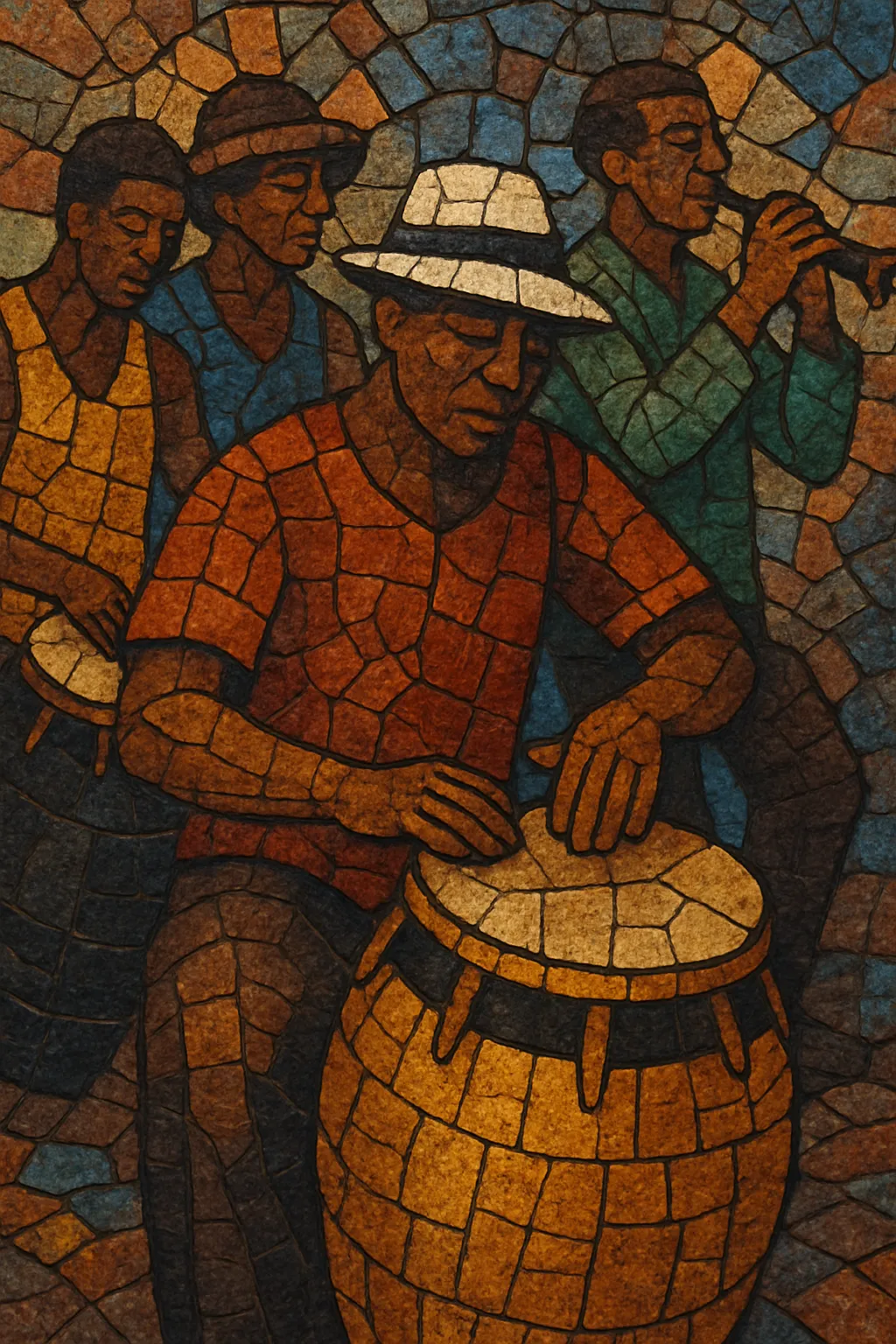Candombe is an Afro‑Uruguayan percussion tradition centered on the interplay of three barrel drums called tamboriles: chico (the high, time‑keeping drum), repique (the improvisatory, conversational drum), and piano (the deep, bass foundation). Played in a forward‑moving parade formation known as a cuerda de tambores, its groove is driven by a characteristic clave‑like timeline articulated on the shell (madera) and by the interlocking parts of the three drums.
Beyond rhythm, candombe is a living cultural practice linked to Afro‑Uruguayan neighborhoods in Montevideo—especially Barrio Sur, Palermo, and Cordón—where comparsas (troupes) combine drummers, dancers, flag bearers, and emblematic characters (mamas viejas, gramilleros, and the escobero). While primarily percussive, modern song forms and fusions often add vocals, guitar, bass, and keyboards, projecting candombe into jazz, pop, and rock contexts while retaining its unmistakable swing and street‑parade energy.
Candombe emerged in Montevideo during the 1800s among communities of enslaved and free Afro‑descendants, many with roots in the Congo/Angola region. In neighborhood "salas de nación" and street gatherings, drum ensembles developed a distinct local practice, with processional "llamadas" (calls) drawing groups together through polyrhythmic drumming and dance. Authorities periodically restricted these gatherings, but the practice persisted and became a cornerstone of Afro‑Uruguayan identity.
By the early 1900s, candombe was firmly embedded in Montevideo’s carnival. Comparsas of "negros y lubolos" (the latter originally referring to non‑Black participants who adopted the tradition) helped standardize the instrumentation into the three tamboriles—chico, repique, and piano—and codified parade roles (dancers, flags, and emblematic figures). The groove’s clave‑like timeline and characteristic swing became widely recognized hallmarks of the style.
From the 1950s onward, radio, records, and urban cultural exchange spread candombe’s reach. In the 1960s–70s, musicians such as Eduardo Mateo, Rubén Rada, and the Fattoruso brothers fused candombe with rock, pop, and jazz, creating the "candombe beat" and influencing generations of Uruguayan popular music. Even under political repression during the dictatorship era, neighborhood practice and carnival comparsas kept the tradition alive.
Since the late 20th century, candombe has gained global visibility through tours, recordings, and collaborations with jazz and world‑music artists. UNESCO recognized "Candombe and its socio‑cultural space" as Intangible Cultural Heritage of Humanity in 2009, underscoring both its musical distinctiveness and its role in Afro‑Uruguayan cultural life. Today, the distinct neighborhood toques (Cuareim/Ansina/Cordón) and annual Llamadas carnival parades continue to animate Montevideo, while new fusions carry the groove into contemporary genres.


